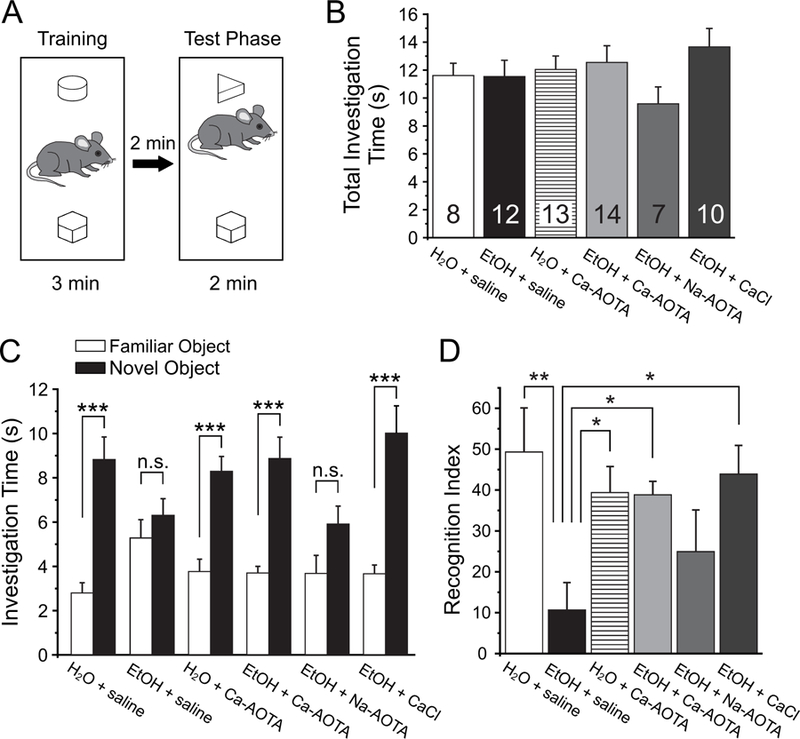Fig. 4.

Treatment with calcium-acamprosate (Ca-AOTA) or calcium-chloride (CaCl2) reverses deficits in novel object recognition induced by chronic ethanol exposure. A) Mice were placed in an open box and allowed to investigate two wooden objects for 3 minutes before they were placed back into their home cage for 2 minutes. One of the two objects was replaced with a novel object and animals were allowed to explore both objects for an additional 2 minutes. B) Total investigation time during the training phase did not differ significantly between treatment groups, and animals showed no inherent preferences for any one object. C) During the test phase, animals in all groups spent significantly more time with the novel object, with the exception of mice exposed to EtOH and treated with saline or sodium acamprosate (Na-AOTA), which showed no significant preference for the novel object. D) A recognition index was calculated by dividing the amount of time spent with the novel object over the total time spent investigating both objects. Ethanol exposed animals that were treated with saline scored lower recognition indices, suggesting a deficit in their ability to differentiate between familiar and novel objects. Treatment with Ca-AOTA or CaCl2 prevented these deficits, resulting in recognition indices comparable to those of alcohol-naïve control mice. Significance is indicated as * for p < 0.05, ** for p < 0.01, and *** for p < 0.001, following Bonferroni correction.
